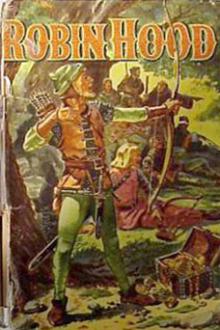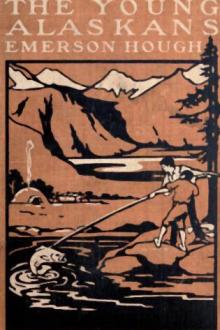Moby-Dick; or, The Whale by Herman Melville (uplifting books for women TXT) 📕

Read free book «Moby-Dick; or, The Whale by Herman Melville (uplifting books for women TXT) 📕» - read online or download for free at americanlibrarybooks.com
- Author: Herman Melville
Read book online «Moby-Dick; or, The Whale by Herman Melville (uplifting books for women TXT) 📕». Author - Herman Melville
“‘What do you want of me?’ cried the captain.
“‘Where are you bound? and for what are you bound?’ demanded Steelkilt; ‘no lies.’
“‘I am bound to Tahiti for more men.’
“‘Very good. Let me board you a moment—I come in peace.’ With that he leaped from the canoe, swam to the boat; and climbing the gunwale, stood face to face with the captain.
“‘Cross your arms, sir; throw back your head. Now, repeat after me. As soon as Steelkilt leaves me, I swear to beach this boat on yonder island, and remain there six days. If I do not, may lightnings strike me!’
“‘A pretty scholar,’ laughed the Lakeman. ‘Adios, Senor!’ and leaping into the sea, he swam back to his comrades.
“Watching the boat till it was fairly beached, and drawn up to the roots of the cocoa-nut trees, Steelkilt made sail again, and in due time arrived at Tahiti, his own place of destination. There, luck befriended him; two ships were about to sail for France, and were providentially in want of precisely that number of men which the sailor headed. They embarked; and so for ever got the start of their former captain, had he been at all minded to work them legal retribution.
“Some ten days after the French ships sailed, the whale-boat arrived, and the captain was forced to enlist some of the more civilized Tahitians, who had been somewhat used to the sea. Chartering a small native schooner, he returned with them to his vessel; and finding all right there, again resumed his cruisings.
“Where Steelkilt now is, gentlemen, none know; but upon the island of Nantucket, the widow of Radney still turns to the sea which refuses to give up its dead; still in dreams sees the awful white whale that destroyed him. * * * *
“‘Are you through?’ said Don Sebastian, quietly.
“‘I am, Don.’
“‘Then I entreat you, tell me if to the best of your own convictions, this story is in substance really true? It is so passing wonderful! Did you get it from an unquestionable source? Bear with me if I seem to press.’
“‘Also bear with all of us, sir sailor; for we all join in Don Sebastian’s suit,’ cried the company, with exceeding interest.
“‘Is there a copy of the Holy Evangelists in the Golden Inn, gentlemen?’
“‘Nay,’ said Don Sebastian; ‘but I know a worthy priest near by, who will quickly procure one for me. I go for it; but are you well advised? this may grow too serious.’
“‘Will you be so good as to bring the priest also, Don?’
“‘Though there are no Auto-da-Fés in Lima now,’ said one of the company to another: ‘I fear our sailor friend runs risk of the archiepiscopacy. Let us withdraw more out of the moonlight. I see no need for this.’
“‘Excuse me for running after you, Don Sebastian; but may I also beg that you will be particular in procuring the largest sized Evangelists you can.’
“‘This is the priest, he brings you the Evangelists,’ said Don Sebastian, gravely, returning with a tall and solemn figure.
“‘Let me remove my hat. Now, venerable priest, further into the light, and hold the Holy Book before me that I may touch it.’
“‘So help me Heaven, and on my honor the story I have told ye, gentlemen, is in substance and its great items, true. I know it to be true; it happened on this ball; I trod the ship; I knew the crew; I have seen and talked with Steelkilt since the death of Radney.’”
OF THE MONSTROUS PICTURES OF WHALES
I shall ere long paint to you as well as one can without canvas, something like the true form of the whale as he actually appears to the eye of the whaleman when in his own absolute body the whale is moored alongside the whale-ship so that he can be fairly stepped upon there. It may be worth while, therefore, previously to advert to those curious imaginary portraits of him which even down to the present day confidently challenge the faith of the landsman. It is time to set the world right in this matter, by proving such pictures of the whale all wrong.
It may be that the primal source of all those pictorial delusions will be found among the oldest Hindoo, Egyptian, and Grecian sculptures. For ever since those inventive but unscrupulous times when on the marble panellings of temples, the pedestals of statues, and on shields, medallions, cups, and coins, the dolphin was drawn in scales of chain-armor like Saladin’s, and a helmeted head like St. George’s; ever since then has something of the same sort of license prevailed, not only in most popular pictures of the whale, but in many scientific presentations of him.
Now, by all odds, the most ancient extant portrait anyways purporting to be the whale’s, is to be found in the famous cavern-pagoda of Elephanta, in India. The Brahmins maintain that in the almost endless sculptures of that immemorial pagoda, all the trades and pursuits, every conceivable avocation of man, were prefigured ages before any of them actually came into being. No wonder then, that in some sort our noble profession of whaling should have been there shadowed forth. The Hindoo whale referred to, occurs in a separate department of the wall, depicting the incarnation of Vishnu in the form of leviathan, learnedly known as the Matse Avatar. But though this sculpture is half man and half whale, so as only to give the tail of the latter, yet that small section of him is all wrong. It looks more like the tapering tail of an anaconda, than the broad palms of the true whale’s majestic flukes.
But go to the old Galleries, and look now at a great Christian painter’s portrait of this fish; for he succeeds no better than the antediluvian Hindoo. It is Guido’s picture of Perseus rescuing Andromeda from the sea-monster or whale. Where did Guido get the model of such a strange creature as that? Nor does Hogarth, in painting the same scene in his own “Perseus Descending,” make out one whit better. The huge corpulence of that Hogarthian monster undulates on the surface, scarcely drawing one inch of water. It has a sort of howdah on its back, and its distended tusked mouth into which the billows are rolling, might be taken for the Traitors’ Gate leading from the Thames by water into the Tower. Then, there are the Prodromus whales of the old Scotch Sibbald, and Jonah’s whale, as depicted in the prints of old Bibles and the cuts of old primers. What shall be said of these? As for the book-binder’s whale winding like a vine-stalk round the stock of a descending anchor—as stamped and gilded on the backs and title-pages of many books both old and new—that is a very picturesque but purely fabulous creature, imitated, I take it, from the like figures on antique vases. Though universally denominated a dolphin, I nevertheless call this book-binder’s fish an attempt at a whale; because it was so intended when the device was first introduced. It was introduced by an old Italian publisher somewhere about the 15th century, during the Revival of Learning; and in those days, and even down to a comparatively late period, dolphins were popularly supposed to be a species of the Leviathan.
In the vignettes and other embellishments of some ancient books you will at times meet with very curious touches at the whale, where all manner of spouts, jets d’eau, hot springs and cold, Saratoga and Baden-Baden, come bubbling up from his unexhausted brain. In the title-page of the original edition of the “Advancement of Learning” you will find some curious whales.
But quitting all these unprofessional attempts, let us glance at those pictures of leviathan purporting to be sober, scientific delineations, by those who know. In old Harris’s collection of voyages there are some plates of whales extracted from a Dutch book of voyages, A.D. 1671, entitled “A Whaling Voyage to Spitzbergen in the ship Jonas in the Whale, Peter Peterson of Friesland, master.” In one of those plates the whales, like great rafts of logs, are represented lying among ice-isles, with white bears running over their living backs. In another plate, the prodigious blunder is made of representing the whale with perpendicular flukes.
Then again, there is an imposing quarto, written by one Captain Colnett, a Post Captain in the English navy, entitled “A Voyage round Cape Horn into the South Seas, for the purpose of extending the Spermaceti Whale Fisheries.” In this book is an outline purporting to be a “Picture of a Physeter or Spermaceti whale, drawn by scale from one killed on the coast of Mexico, August, 1793, and hoisted on deck.” I doubt not the captain had this veracious picture taken for the benefit of his marines. To mention but one thing about it, let me say that it has an eye which applied, according to the accompanying scale, to a full grown sperm whale, would make the eye of that whale a bow-window some five feet long. Ah, my gallant captain, why did ye not give us Jonah looking out of that eye!
Nor are the most conscientious compilations of Natural History for the benefit of the young and tender, free from the same heinousness of mistake. Look at that popular work “Goldsmith’s Animated Nature.” In the abridged London edition of 1807, there are plates of an alleged “whale” and a “narwhale.” I do not wish to seem inelegant, but this unsightly whale looks much like an amputated sow; and, as for the narwhale, one glimpse at it is enough to amaze one, that in this nineteenth century such a hippogriff could be palmed for genuine upon any intelligent public of schoolboys.
Then, again, in 1825, Bernard Germain, Count de Lacépède, a great naturalist, published a scientific systemized whale book, wherein are several pictures of the different species of the Leviathan. All these are not only incorrect, but the picture of the Mysticetus or Greenland whale (that is to say, the Right whale), even Scoresby, a long experienced man as touching that species, declares not to have its counterpart in nature.
But the placing of the cap-sheaf to all this blundering business was reserved for the scientific Frederick Cuvier, brother to the famous Baron. In 1836, he published a Natural History of Whales, in which he gives what he calls a picture of the Sperm Whale. Before showing that picture to any Nantucketer, you had best provide for your summary retreat from Nantucket. In a word, Frederick Cuvier’s Sperm Whale is not a Sperm Whale, but a squash. Of course, he never had the benefit of a whaling voyage (such men seldom have), but whence he derived that picture, who can tell? Perhaps he got it as his scientific predecessor in the same field, Desmarest, got one of his authentic abortions; that is, from a Chinese drawing. And what sort of lively lads with the pencil those Chinese are, many queer cups and saucers inform us.
As for the sign-painters’ whales seen in the streets hanging over the shops of oil-dealers, what shall be said of them? They are generally Richard III. whales, with dromedary humps, and very savage; breakfasting on three or four sailor tarts, that is whaleboats full of mariners: their deformities floundering in seas of blood and blue paint.
But these manifold mistakes in depicting the whale are not so very surprising after all. Consider! Most of the scientific drawings have been taken from the stranded fish; and these are about as correct as a drawing of a wrecked ship, with broken back, would correctly represent the noble animal itself in all its undashed pride of hull and spars. Though elephants have stood for their full-lengths, the living Leviathan has never yet fairly floated himself for his portrait. The living whale, in his full majesty and significance, is only to be seen at sea in unfathomable waters; and afloat the vast bulk of him is out of sight, like a launched line-of-battle ship; and out of that element it is a thing eternally impossible for mortal man to hoist him bodily into the air, so as to preserve all his mighty swells and undulations. And, not to speak of the highly presumable difference of contour between a young sucking whale and a full-grown Platonian Leviathan; yet, even in the case of one of those young sucking whales hoisted to a ship’s deck, such is then the outlandish, eel-like, limbered, varying shape of him, that his precise expression the devil himself could not catch.
But it may be fancied, that from the





Comments (0)